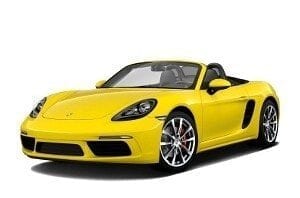The Nissan e-NV200 (2018) RV also has problems with fast charging [Bjorn Nyland] • ELECTROMAGNETS
Interesting finds from Youtuber Björn Nyland, who drove several hundred kilometers in a Nissan e-NV200 electric van with a 40 kWh battery. It turns out that this Nissan model also has issues with repeated fast charging, but they're not as severe as the new Leaf.
Table of contents
- Slower charging also on e-NV200
- Wnioski
Bjorn Nyland described his journey through Norway in an electric Nissan e-NV200 40 kWh. The battery warms up quickly after driving hard. As a result, it connects to the charger. the electric locomotive limited the charging power from the nominal 42-44 kW to 25-30 kW..
![The Nissan e-NV200 (2018) RV also has problems with fast charging [Bjorn Nyland] • ELECTROMAGNETS](https://avtotachki.com/wp-content/uploads/2021/11/u-gruzovogo-avtofurgona-nissan-e-nv200-2018-takzhe-est-problemy-s-bystroy-zaryadkoy-b-orn-nayland-elektromagniki---www-elektrowoz-pl-1.jpg)
However, the Nissan e-NV200 has active battery cooling: during fast DC charging, the fans spin and ensure that the temperature of the traction batteries does not exceed 40 degrees. Meanwhile, the Nissan Leaf doesn’t have active battery cooling – as a result, it heats up to 50+ degrees Celsius. This reduces the charging power to a few kilowatts and increases the idle time at the charger by 2-3 times!
> Rapidgate: electric Nissan Leaf (2018) with a problem - it's better to wait with the purchase for now
Nyland noticed something else. The e-NV200 active battery cooling only works in two situations:
- when the car is connected to a fast charger (DC),
- when the car is connected to a slower AC charger Oraz activated.
When driving and after connecting to the air conditioner rack, but when the car was turned off, the fans did not work.
Wnioski
How to drive a Nissan electric van to avoid long stops at the charger? Youtuber recommends a maximum of 90-95 km / h (odometer) without overtaking. Go down into the charger when the battery charge level is at least 10 percent, as the loss (= heat dissipation) is higher below this value.
> Auto Bild praises the 64 kWh Hyundai Kona: "The car has performed well in everyday use."
On the other hand, discharging at least up to 25 percent is a good idea. All this so that the battery can heat the air flowing around it as much as possible while driving, and ... so that it does not get up too often. With proper care, the car will be able to drive 200-250 kilometers on a single charge.
Here's the full video:
Nissan e-NV200 40 kWh with Rapidgate
This may interest you:

![The Nissan e-NV200 (2018) RV also has problems with fast charging [Bjorn Nyland] • ELECTROMAGNETS](https://avtotachki.com/wp-content/uploads/2022/03/ferrari-348-klassicheskij-avtomobil-otrestavrirovannyj-v-polshe.jpg)